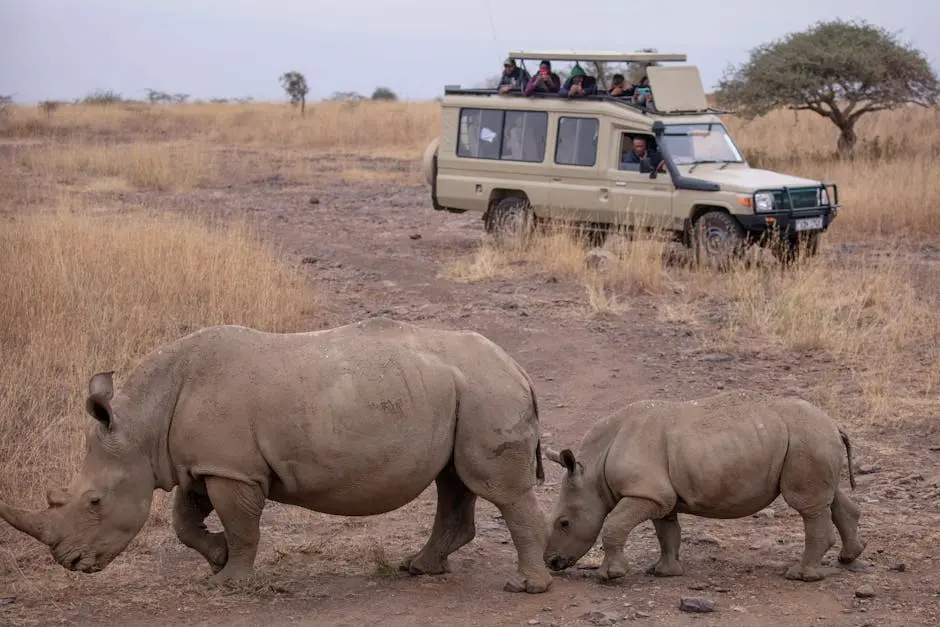Planning a safari in Kenya? One of the most crucial aspects of your adventure is choosing the right car hire service. This decision can greatly affect your experience, as it determines your comfort and convenience throughout the journey. Here are ten essential tips to help you make the best choice for your safari car hire in Kenya.
1. Understand Your Safari Needs
Consider the type of safari you’re planning. Will you be in the national parks, or traversing private conservancies? Each environment requires different vehicle capabilities. Understanding your needs will help you choose the right vehicle, ensuring that you have the best experience possible. For instance, a vehicle suited for rugged terrain might not provide the comfort you seek in more manicured areas. Knowing where you’ll be going and the type of roads you’ll encounter creates a clearer picture.
Think about how many people will accompany you on your adventure. Is it a romantic getaway for two or are you traveling with friends or family? A compact SUV may serve you well for a couple, while a spacious van may be the best choice for a larger group. Additionally, consider the amount of luggage you’ll have along. Vehicles that offer ample space will make your journey more enjoyable and stress-free.
2. Research Rental Companies
Take the time to research various car hire companies. Browse their websites, read customer reviews, and check their reputation. A company with positive feedback from past clients often has a proven track record, which can lead to a smoother rental experience. Additionally, look into their customer service standards. This is crucial, especially if you encounter issues during your rental period.
Another tip is to see if the company offers different types of rentals. Some specialize in safari vehicles, while others may have a plethora of options for standard travel. Flexibility in vehicle selection can be a significant factor in ensuring you have exactly what you need. Don’t hesitate to reach out with any questions. A responsive and informative customer service team is often a sign of a reliable rental company.
3. Check the Vehicle Type
Ensure the vehicle fits your group size and comfort preferences. A four-wheel drive is often preferable for safari terrains, especially considering the varied landscapes you might encounter. The last thing you want is to be uncomfortable or stuck in a sandy patch because your vehicle isn’t equipped properly for the adventure at hand. So keep an eye out for features that cater specifically to safari experiences.
Also, consider additional features such as air conditioning, which can be a lifesaver in the Kenyan heat. If you’re planning long drives, a vehicle with good fuel efficiency can also save you a considerable amount in the long run. Beyond just size and comfort, think about how the vehicle will handle dust and rough roads; a well-suited car can enhance your overall safari experience.
4. Review Insurance Options
Understanding what insurance coverage is included in your rental agreement is key. It’s crucial to know what you’re covered for in case of an accident or theft. Extra coverage can provide peace of mind during your travels, especially in a foreign country where road conditions may not be familiar. Some rental companies may offer packages that include comprehensive coverage tailored for safari adventures.
In cases of accidents, it’s comforting to know that you’ll be taken care of. Carefully reading through the fine print of insurance policies can highlight what you’re responsible for versus what the rental company covers. It may seem tedious, but investing a little time to comprehend these details can save you from unexpected expenses down the line.
5. Consider Fuel Policies
Different companies have different fuel policies. Some may require you to return the vehicle with a full tank, while others might have a ‘full to empty’ policy where you pay upfront for a full tank and return it empty. Make sure you understand the policy that applies to you before booking, as it can influence how much you spend on your trip. Being aware of these stipulations can prevent any last-minute surprises.
When planning your itinerary, factor in fuel stops. Having a clear understanding of fuel policies also allows you to compute how much you’ll need to budget for gas expenses. Knowing the general fuel costs and how far you plan to drive will keep your finances on track, enabling you to fully enjoy the adventure.
6. Inspect the Vehicle
Before driving off, inspect the vehicle thoroughly for any pre-existing damages and ensure everything is in good working order. Check tire conditions, brakes, and any indications of a serviceable engine. Pay attention to the minor details that could become major issues later. It’s essential to document any visible damage when you first take possession of the vehicle, so you’re not held accountable later.
If something seems off, don’t hesitate to bring it up with the rental company before you leave. A reliable rental service will encourage you to raise concerns. A well-maintained vehicle is not just about comfort; it’s a safety issue too. Whether you’re navigating bumpy roads in national parks or sidelining on scenic routes, your safety is paramount.
7. Understand Terms and Conditions
Reading and understanding the rental agreement, including any mileage limitations and other important terms, is crucial. Knowing these terms can help you avoid potential fines and ensure you’re following the rental company’s guidelines. Many companies offer unlimited mileage for longer rentals, while others may impose limits that can affect how far you can roam.
Don’t skip over the terms regarding late returns or vehicle damage either—knowledge of these stipulations can save you from paying extra. Familiarize yourself with the policies surrounding deposits and payment methods as well. This understanding can enhance the efficiency of your rental experience, allowing you to enjoy the trip with fewer worries.
8. Ask About Roadside Assistance
Inquire about the availability of roadside assistance services. It’s vital for peace of mind while on your safari adventure. An enjoyable safari shouldn’t be marred by unexpected vehicle trouble. Knowing that help is just a phone call away allows you to explore Kenya’s breathtaking landscapes with confidence.
Ask questions like how quickly they can respond, what services are included, and if there are any additional charges for such services. Having access to reliable roadside support is like having a safety net—an essential part of your planning. It can prevent minor issues from turning into major inconveniences during your trip.
9. Check for Hidden Fees
Be vigilant about potential hidden fees related to taxes, insurance, or extra equipment. Always clarify any costs upfront to ensure you know what you’re getting into before signing the agreement. Some rental companies may advertise lower rates but sneak in additional fees that can quickly escalate the total cost.
When comparing different rental companies, make sure to do a side-by-side comparison of what is included in their pricing. This diligence can safeguard your budget and help you make an informed decision. If something sounds too good to be true, it often is, so always question any excessive low-ball offers.
10. Gather Feedback from Previous Customers
Look for testimonials or reviews from previous customers. Their experiences can provide valuable insights into the company’s service quality. Online review platforms and travel forums often hold honest feedback that can assist in your decision-making process. Take notes of both positive and negative reviews, as they will highlight what you might miss by only relying on the company’s marketing.
Additionally, if you have friends or family who have rented cars in Kenya before, don’t hesitate to ask about their experiences. Personal recommendations carry a lot of weight and could lead you to companies that stand out for their customer service and reliable vehicles. Gathering diverse feedback can truly help you make the best choice possible for your trip.




